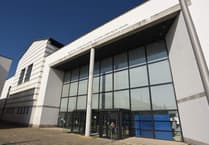Manx Care has unveiled its comprehensive strategy to manage the increased demand for health and care services during TT 2024.
The TT is the island’s busiest annual event, with more than 43,000 visitors travelling to the Isle of Man during last year’s races.
Typically Noble’s Hospital is under extreme pressure during the two week festival. At a glance:
- Enhanced Staffing: Noble’s Hospital Emergency Department will have additional nursing and medical staff to manage increased demand and provide an enhanced Trauma Team response.
- Specialist Support: Collaboration with Aintree Major Trauma Centre and The Walton Centre for Neurosciences for severe injury cases requiring off-island transfers.
- Expanded Resources: Extra orthopaedic trauma surgeons, fully staffed Critical Care Unit, additional radiology support, and increased blood product supplies.
- Ambulance Services: Isle of Man Ambulance Service boosted with additional personnel, full fleet of emergency response vehicles, and the A99 helicopter for rapid incident response.
- Community Services: Fully staffed Minor Injuries and Illnesses Unit at Ramsey Hospital to alleviate pressure on Noble’s Hospital and maintain regular services where possible.
This year’s measures include enhanced staffing, expanded trauma response teams, and coordinated efforts with UK medical centres to ensure high-quality care for both residents and the influx of visitors.
Noble’s Hospital will see a significant boost in its Emergency Department (ED) capacity, with additional nursing and medical staff brought in to support an enhanced Trauma Team.
This expansion aims to manage not only trauma cases from the TT races but also all other urgent or emergency care needs.
In collaboration with the Aintree Major Trauma Centre and The Walton Centre for Neurosciences, Manx Care will provide support for patients requiring off-island transfers for severe and multiple injuries.
These transfers will be facilitated by Manx Care’s fixed-wing air ambulance service, operational 24/7, or the Great North Air Ambulance Service (GNAAS), which can deliver advanced pre-hospital care and direct transfers to specialist hospitals or Noble’s Hospital.
Orthopaedic trauma teams at Noble’s Hospital will be reinforced with additional surgeons to handle the anticipated increase in demand, while the Critical Care Unit will remain fully staffed to accommodate critically ill and injured patients prior to their transfer to the UK.
Additional radiology support and extra blood products have also been secured to address the projected surge in demand at Ramsey and District Cottage Hospital and for urgent diagnostic assessments.
The Isle of Man Ambulance Service (IMAS) is gearing up for a busy TT period, with mutual aid from colleagues from the Isle of Wight and Guernsey.
Alongside the usual land-based ambulances, IMAS will have access to a full fleet of emergency response vehicles, including critical care cars, rapid response cars, and the A99 helicopter, which will enable rapid response to non-racing incidents in difficult-to-reach locations.
The A99 will be staffed by Manx Care emergency medics, and a GNAAS paramedic will join IMAS throughout the event to support their operations. The Minor Injuries and Illnesses Unit (MIU) at Ramsey and District Cottage Hospital will also be fully staffed, ensuring it can provide crucial support to the North of the Island. This service will help alleviate pressure on Noble’s Hospital’s ED by treating minor injuries and illnesses locally.
Despite the focus on the TT event, Manx Care aims to maintain regular services at Noble’s Hospital, including outpatient appointments, blood tests, endoscopy, x-rays, and planned operations, with the orthopaedic service being the only area significantly affected.
Oliver Radford, Manx Care’s executive director of health services, said: ‘We’ve been working on our TT response since Autumn 2023 and aim to continually improve our plan year on year to provide the highest quality care to those who need it during the event whilst trying to maintain “business as usual” services to our local population despite the additional 50,000 people on the island.
‘I hope residents and visitors will feel reassured that we will be there for them if they need us.’




